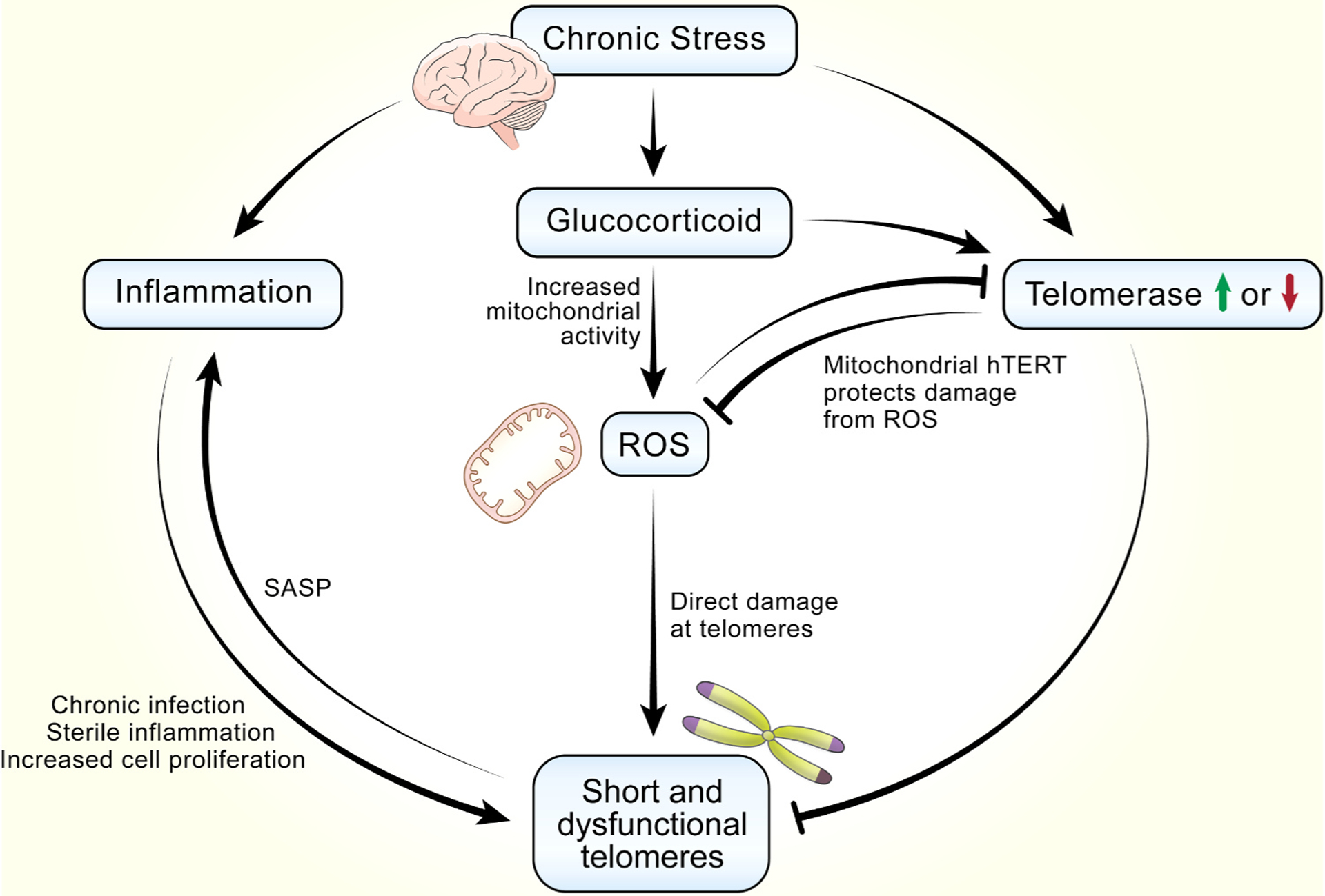Fig. 2.

Interconnected molecular and cellular pathways linking psychological stress to short and dysfunctional telomeres. Stress induces secretion of glucocorticoids, which leads to the generation of ROS through increased mitochondrial activity. ROS preferentially damages telomeres and inhibits telomerase activity, and both contribute to short and dysfunctional telomeres. Glucocorticoid can also directly inhibit or induce telomerase activity depending on specific contexts. The roles of telomerase in mitochondria functions are illustrated in more details in Fig. 3. Another important pathway downstream of glucocorticoid is increased inflammation, which lead to short and dysfunctional telomeres viral chronic infection, sterile inflammation and subsequent increased immune cell proliferation. Senescent cells caused by dysfunctional telomeres display a pro-oxidant, pro-inflammatory phenotype known as the senescence associated secretory phenotype (SASP). Thus, inflammation and dysfunctional telomeres form a positive, reinforcing feedback loop, leading to increasing systemic inflammation and increases in number of cells with dysfunctional telomeres.
